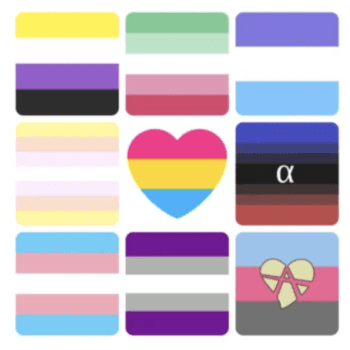Let me tell you a story. This summer I, some youth, and a bunch of cell phones (and their chargers) attended the ELCA Youth Gathering in Houston, Texas.
We rode a bus (overnight) from Arkansas to Houston. Overnight, because every good youth trip adult leaders have to start out exhausted. We used our phones all night.
Like all good youth leaders (from the 90s), I brought a stack of DVDs for the bus ride. But we didn’t really use any of the DVDs (okay, we did watch half of The Goonies), because everybody on the bus had phones (or iPads, or Kindles), so each consumed their own media in their own seat.
As people in 2018 do.
I’m going to come back to this in a bit.

For those unfamiliar, the ELCA Gathering is one of the largest youth gatherings in the world. 30,000 young people gather for a week of service learning, worship, and church youth-y stuff. Young people from all fifty states and many other countries attend. Almost all the youth groups buy matching t-shirts for their groups, so whatever city we visit looks, at least for that week, like a giant bag of Skittles exploded.

We do a bit of good. The city encounters youth culture. Youth encounter a bit of the world, and learn there are a lot of kids like them all over the country. And sometimes really cool stuff happens, like 30,000 people belting out a rendition of Bohemian Rhapsody with the DJ in the Astrodome. Also, cell phones as lighters.
But I wanted to talk about all those screens. About ten minutes into our bus ride, when I realized everybody was going to be using their own screens most of the trip, I tried to conduct a brief survey of what might be on the screens.
For the youth, it went kind of like this.
Instagram.
Instagram.
Instagram.
Snapchat.
Spotify
Oh my God what in the world is that on Youtube?!
For the youth leaders it went:
Facebook.
Facebook.
Google Maps.
Weather App.
Uber.
Gathering App.
As you can see, usage did differ by generations. But you know what didn’t differ? Usage.
Everybody was using their phones. All the time.
Now, I did have some concerns. For example, why weren’t there more bus flips? When I was a youth, we didn’t have phones, so we used the handles in the aisle of the bus to do bus flips. And we played a lot of cards and talked about a lot of weird stuff.
Similarly, at the hotel, we got bored (back in the late 80s when the youth gathering was in San Antonio), so we used the elevator and other parts of the hotel and bus to do bored things that frustrated adults.
Our youth didn’t do these things. Ever. Like, ever! Because if they got a little bit bored, they had their phones.
However, the adults could do the same thing. If I was somewhat exhausted of conversation and people, I could get on Facebook and post videos and photos of the trip. I could text friends.
In other words, the phone has definitely and permanently changed youth culture. But it’s also changed the culture of adults hanging out with youth. We can keep track of each other and find each other in a crowd in ways we couldn’t before.
And you can Google anything you discover, to learn more about it. The kids do this too. In your pocket is a walking museum walkman to learn about the exhibits.
So I’ve got a few questions. First, I think my major concern for youth culture and devices is the absence of risk, and perhaps the absence of boredom. I worry this will come back to bite this generation.
With adults, I think I’m less self-aware. Like, what has the insertion of this many media moment done to us we aren’t even noticing? How are we differently present with young people than in the past?
This gives us opportunity to use the ever-present devices to form faith and youth culture using the tools at hand. At the Gathering, they did this by pointing young people to the media streams and hashtags they could use in the platforms they inhabit. And in interactive centers, giving them the chance to advocate for justice issues using tools on their phones.
On the other hand, the ubiquitous media available on the phones populated the imagination of the youth and adults more than the other way around. In their free time, the youth gravitated to media not at all connected to the gathering. And it’s likely this was true of adults also.
We’re long past the moment when people could say: put your phones away and be in the moment.
We’re now in the moment when we say, “Get out your phones because Oh My God yes look you can encounter God on Youtube, and here’s the link!”












